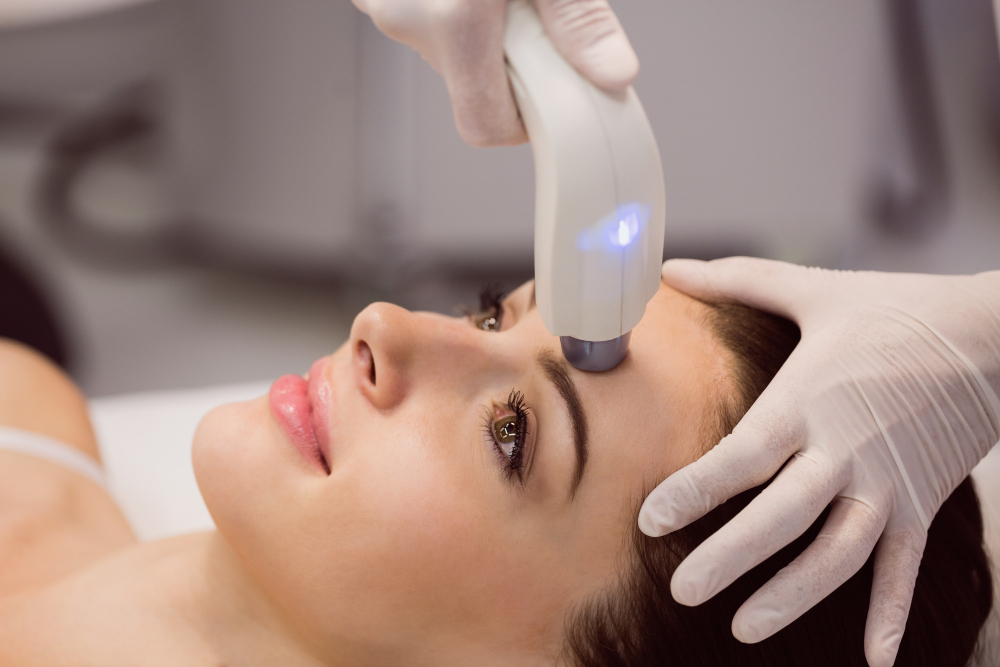Laser skin resurfacing is a cutting-edge cosmetic procedure designed to improve the texture, tone, and appearance of the skin. In Dubai, where aesthetic and dermatological treatments are highly advanced, laser skin resurfacing offers a range of options to address various skin concerns. This comprehensive guide covers everything you need to know about Laser Skincare Treatmentr in Dubai, including types, benefits, preparation, and aftercare.
1. What is Laser Skin Resurfacing?
Overview
Laser skin resurfacing uses focused laser light to remove damaged skin layers and stimulate the production of new, healthy skin. It’s an effective treatment for improving skin texture, reducing wrinkles, and addressing pigmentation issues.
How It Works
- Laser Technology: Lasers emit light that is absorbed by specific skin targets, such as pigments or damaged cells. This absorption generates heat that removes damaged tissue and promotes collagen production.
- Skin Layers: Lasers can target different skin layers, from the outermost surface to deeper layers, depending on the type of laser and the treatment goals.
2. Types of Laser Skin Resurfacing
Ablative Lasers
CO2 Lasers
- Overview: Carbon dioxide (CO2) lasers are highly effective for treating deeper wrinkles, severe sun damage, and acne scars. They remove the outer layers of skin and promote collagen production.
- Benefits: Significant improvement in skin texture, reduction of deep wrinkles, and long-lasting results.
- Downtime: Longer recovery time due to deeper skin removal.
Erbium YAG Lasers
- Overview: Erbium YAG lasers are used for more superficial skin issues and offer a less invasive alternative to CO2 lasers. They are effective for treating fine lines, mild to moderate wrinkles, and superficial pigmentation.
- Benefits: Faster recovery compared to CO2 lasers, with significant improvement in skin texture and tone.
- Downtime: Shorter recovery time and less discomfort.
Non-Ablative Lasers
Fractional Lasers
- Overview: Fractional lasers, such as Fraxel, target specific areas of the skin while leaving surrounding tissue intact. They are effective for treating fine lines, acne scars, and pigmentation.
- Benefits: Minimal downtime, suitable for various skin types, and stimulates collagen production without removing the skin’s surface.
- Downtime: Minimal, with temporary redness and swelling.
NdLasers
- Overview: Ndlasers penetrate deeper into the skin to treat deeper layers and are effective for reducing redness, tightening skin, and treating vascular lesions.
- Benefits: Effective for deeper skin issues and larger areas, with minimal downtime.
- Downtime: Typically minimal, with some temporary redness.
3. Benefits of Laser Skin Resurfacing
Key Advantages
- Improves Skin Texture: Reduces the appearance of fine lines, wrinkles, and acne scars.
- Enhances Skin Tone: Addresses pigmentation issues and uneven skin tone.
- Stimulates Collagen Production: Promotes the production of collagen, leading to firmer, more youthful-looking skin.
- Non-Surgical: Offers a non-invasive alternative to surgical skin tightening procedures.
4. Preparing for Laser Skin Resurfacing
Consultation
- Professional Assessment: Schedule a consultation with a qualified dermatologist or laser specialist to assess your skin type, discuss your concerns, and develop a customized treatment plan.
- Pre-Treatment Instructions: Follow any specific instructions provided by your specialist, including avoiding sun exposure and discontinuing certain skincare products.
Pre-Treatment Care
- Avoid Sun Exposure: Protect your skin from the sun and avoid tanning for several weeks before treatment.
- Discontinue Certain Products: Stop using products that may irritate the skin, such as retinoids or exfoliants, as advised by your specialist.
- Hydrate and Prepare: Ensure your skin is well-hydrated and follow any specific instructions for preparing the treatment area.
5. What to Expect During the Procedure
During the Treatment
- Comfort Measures: Numbing cream or local anesthesia may be applied to minimize discomfort. Protective eyewear is used to shield your eyes from the laser light.
- Procedure Duration: Treatment times vary based on the area and type of laser used, typically ranging from 30 minutes to an hour.
Sensations
- Mild Discomfort: You may experience a sensation similar to a rubber band snapping against the skin, but discomfort is generally manageable.
6. Aftercare and Recovery
Post-Treatment Care
- Sun Protection: Use broad-spectrum sunscreen with SPF 30 or higher and avoid direct sunlight to protect healing skin.
- Gentle Skincare: Follow a gentle skincare routine with mild products and avoid harsh exfoliants or irritating ingredients.
- Manage Reactions: You may experience redness, swelling, or peeling, which usually subsides within a few days. Apply cool compresses if needed.
Follow-Up Care
- Regular Check-Ups: Schedule follow-up appointments to monitor your progress and address any concerns.
- Additional Treatments: Depending on your skin’s response and treatment goals, additional sessions may be recommended.
7. Cost of Laser Skin Resurfacing in Dubai
Factors Influencing Cost
- Treatment Area: Larger areas (e.g., full face) generally cost more than smaller areas (e.g., under eyes).
- Type of Laser: Costs vary based on the type of laser used and the complexity of the treatment.
- Clinic and Expertise: Prices can vary based on the clinic’s location, technology used, and the experience of the practitioners.
8. Choosing the Right Clinic in Dubai
Key Considerations
- Qualified Practitioners: Ensure that the clinic has certified and experienced practitioners.
- Technology: Opt for clinics that use advanced and FDA-approved laser technologies.
- Reviews and Recommendations: Check patient reviews and seek recommendations to gauge the clinic’s reputation and quality of service.
Consultation
- Initial Meeting: Schedule a consultation to discuss your needs, review the clinic’s facilities, and assess the practitioner’s expertise.
Conclusion
Laser skin resurfacing in Dubai offers a range of advanced treatments to address various skin concerns and achieve a youthful, radiant complexion. By understanding the different types of lasers, preparing properly, and following post-treatment care, you can maximize the benefits of your laser skin resurfacing sessions and enjoy improved skin texture, tone, and overall appearance. Consult with a skilled dermatologist to determine the most suitable treatment for your skin type and goals, and embark on your journey to healthier, more youthful skin.





Comments